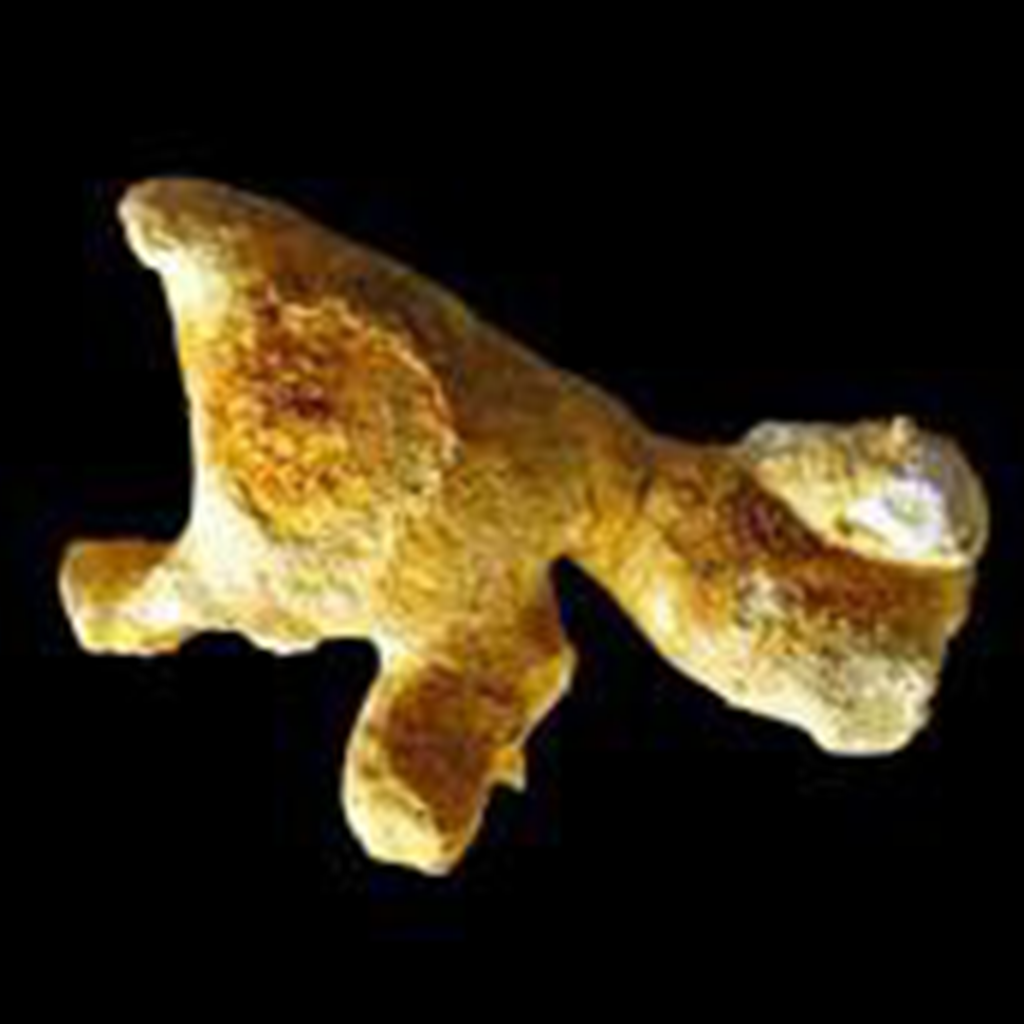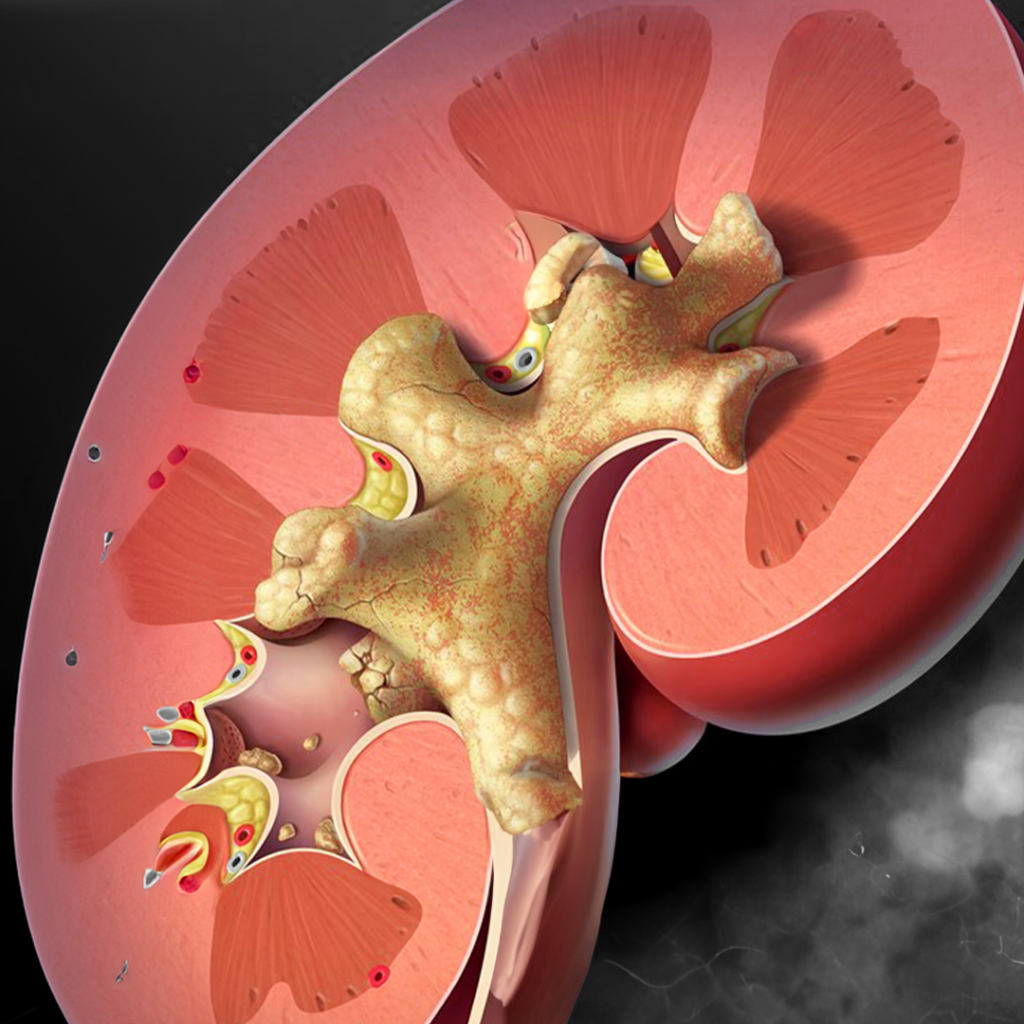Published: August 18, 2024 | 6 mins read
Staghorn Kidney Stones Are BIG Problems!
ARTICLE SHORTCUTS
- What is a Staghorn Kidney Stone?
- Why Do Infection Stones Become Staghorn?
- How are Staghorn Kidney Stones Diagnosed?
- Staghorn Kidney Stone Treatments
- Preventing Staghorn Kidney Stones
Kidney stones are already the worst. Imagine if they even occupied a large portion of your kidney. That’s the exact horror of a staghorn kidney stone! A staghorn kidney stone often forms if you have frequent urinary tract infections (UTIs). We will give more explanation to this in the following section.
What is a Staghorn Kidney Stone?
Staghorn kidney stones got their name from their shape, resembling the branches of coral or the antlers of a deer. These branches can grow large enough to block parts of the kidney, like the pelvis (the center of the kidney that collects urine) and calyces (small cup-like structures).

Staghorn kidney stones are often infection stones. Around 49-68% of cases are due to urinary tract infections. These stones are usually made of struvite, which is a mix of magnesium, phosphate, and ammonium.
However, staghorn kidney stones can also form without infections. When small stones grow larger over time, they can become staghorn. Imagine growing a coral inside your body without you noticing!
Besides pure struvite, staghorn kidney stones can be made of calcium phosphate, calcium oxalate, or mixed struvite and calcium carbonate apatite (a type of calcium phosphate). Recent studies show that cases of non-infection staghorn kidney stones have been increasing. One study compared 25 patients with non-infection staghorn stones and 64 patients with typical infection stones. The only significant finding was higher urinary oxalate levels in the non-infection group. The reason why non-infection stones grow into a staghorn shape is still unclear.

But what about infection stones? Why do they typically become staghorn? The next section has the answer.
Why Do Infection Stones Become Staghorn?
When we say “infection stones,” we are actually referring to struvite stones. Alkaline urine (over 7.0 pH) needs struvite-causing bacteria to thrive.
So, these infection stones can form quickly and grow to fill a large part of the kidney. They might not grow as fast as fire consuming a carpet, but they can grow quickly enough to catch you off guard.
We have a separate blog about struvite stones. Check it out here to better understand this type of kidney stone.
Now, here’s a question you might be interested in: How do you diagnose staghorn kidney stones? The next section will explain.
How are Staghorn Kidney Stones Diagnosed?
Staghorn kidney stones are radiopaque, which means they show up clearly on an X-ray. They appear white or light on the X-ray film.
CT scans also give a better look at your staghorn kidney stones.
If you are worried about radiation exposure, you can undergo an ultrasound. Most staghorn kidney stones have lots of calcium deposits, creating a strong shadow in the ultrasound image. An ultrasound can be used to determine the stone’s size and location. However, an ultrasound may not provide detailed information compared to CT scans.
Once you confirm the presence of a staghorn kidney stone, your next step is treatment. We will walk you through different treatment options in the next section.
Staghorn Kidney Stone Treatments
A staghorn kidney stone typically requires surgery due to its size. If it is an infection stone, even small fragments must be taken out to prevent the infection from spreading. Also, as mentioned earlier, small infection stones can grow large quickly.
One surgical approach is Percutaneous Nephrolithotomy (PCNL). In PCNL, a small incision is made in your back to access the kidney. A temporary tube is inserted to allow instruments to remove the stone. A nephroscope, a specialized camera, is used to locate and remove the stone.
Another method is Ureteroscopy. Here, the instruments are passed through the ureters (the tubes connecting the kidney to the bladder). This approach is performed without incisions by passing instruments through the urethra (the urinary tract opening) and into the kidney.
Shockwave Lithotripsy (SWL) is also an option for stones without infection. SWL uses shockwaves to break up stones, but multiple sessions (typically 2-3) may be needed.
If your staghorn kidney stone is non-infection, you can also use CLEANSE to break it apart, depending on its density. If your stone’s density is less than 750 HU, it can break apart and pass. Joey talked to a guy who had a 4 cm staghorn kidney stone made of calcium oxalate dihydrate. He managed to break it apart and pass it naturally!
After successfully removing your staghorn kidney stone, your next step is prevention. The next section will give insightful strategies to make sure you don’t have this BIG problem again.
Preventing Staghorn Kidney Stones
Fixing your diet is crucial in preventing staghorn kidney stones, especially those made of struvite. Struvite stones only thrive in alkaline urine (pH over 7.0). This means that eating an animal-based diet is a great strategy because it can slightly acidify your urine to around 6.0 pH. It will also boost your immunity, reducing the risk of urinary tract infections (UTIs).
Women are more prone to UTIs due to their shorter urinary tract. Bacteria can enter their urinary tract more easily compared with men. Also, more women prefer a vegetarian diet, which is highly alkaline. For more detailed tips on struvite prevention, refer to our blog on struvite stones here.
Additionally, calcium oxalate stones are closely linked to diet. Almost all plants contain oxalates. So, switching to an animal-based diet will help prevent calcium oxalate stones.
Calcium phosphate stones form in alkaline urine, too. So, keep your urine pH neutral (around 6.0 pH) through an animal-based diet to stop this stone type.The question is: How do you fix your diet?
Join our Coaching Program and we will assemble a personalized Kidney Stone-Free Diet Plan based on your specific nutritional and health needs. This is a great opportunity to cut through the clutter and start right on your diet journey ASAP. See you there!
REFERENCE:

Comments or questions?
Responses
WHAT TO READ NEXT
Publish Date: August 4, 2024
Brushite Stones: The Most Complex Kidney Stones
Publish Date: July 28, 2024
The Deadly Struvite Stones
Publish Date: July 21, 2024
Does Your Kidney Stone Contain Drugs?